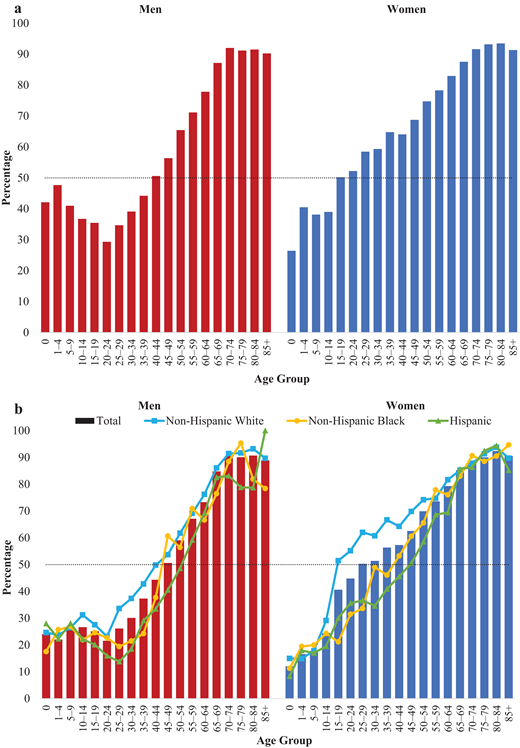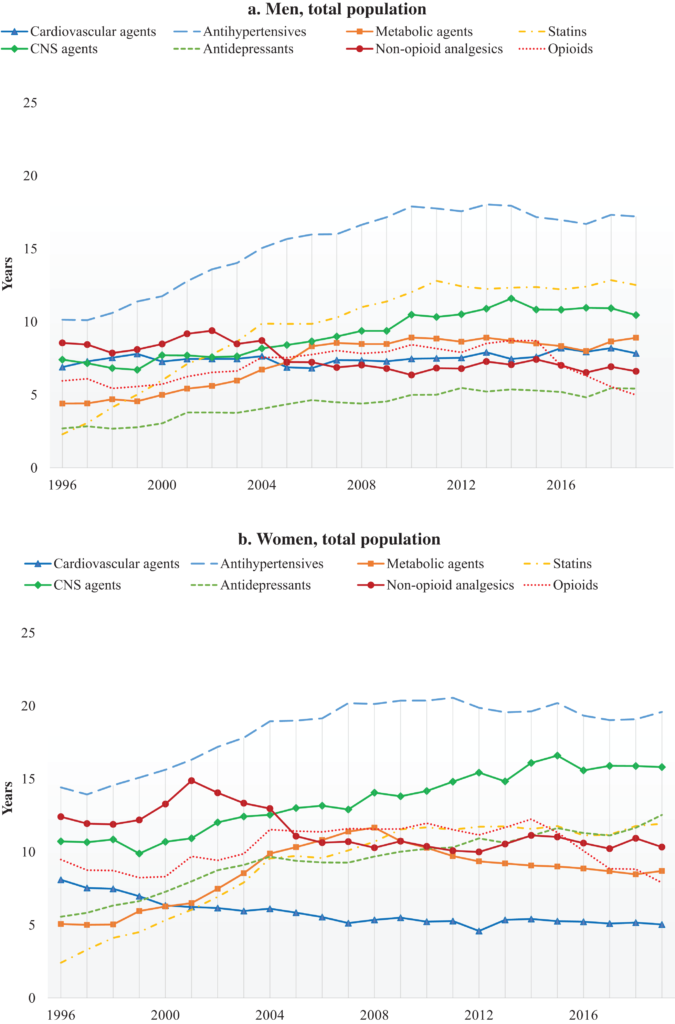That is the topic of an interesting article by Ho (2023).
Prescription drug use has reached historic levels in the United States, a trend linked to increases in medicalization, institutional factors related to the pharmaceutical and healthcare industries, and the aging population and growing burden of chronic disease. Despite the high and increasing prevalence of use, there are no estimates of the total number of years Americans can expect to spend taking prescription medications over their lifetime. This study provides the first estimates of lifetime prescription drug use patterns using data from the 1996 to 2019 Medical Expenditure Panel Surveys, the Human Mortality Database, and the National Center for Health Statistics. . Newborns in 2019 could be expected to take prescription medications for about half of their lives: 47.54 years for women and 36.84 years for men. The number of years people can expect to take five or more medications has increased substantially. Americans also saw particularly dramatic increases in years spent taking statins, antihypertensives, and antidepressants. There are also important differences in prescription drug use by race and ethnicity, with non-Hispanic whites using the most, Hispanics the least, and non-Hispanic blacks falling between these extremes. Americans are using drugs across a wide and growing swath of the life course, a testament to the centrality of prescription drugs in American lives today.


hat tip for Kevin Lewis.








